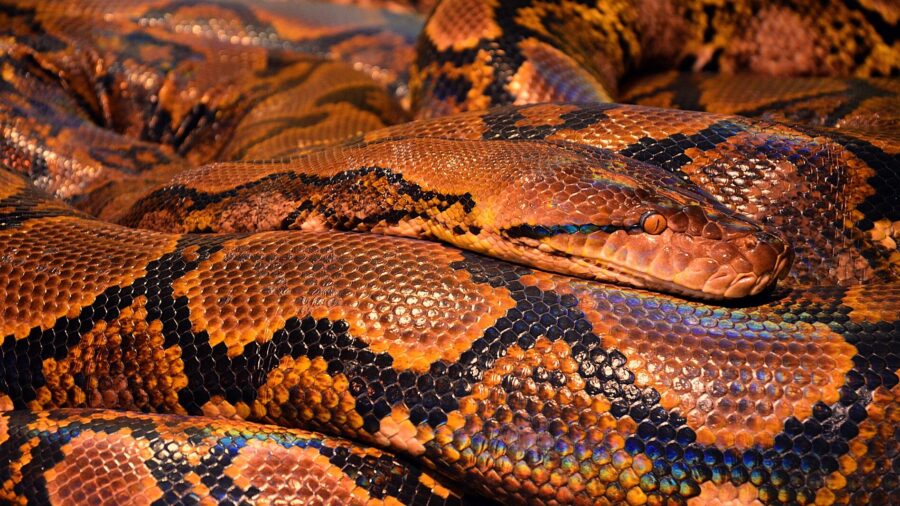Gigantic Snake Discovery Could Be Largest In History

The 30-foot snake in Anaconda ain’t got nothing on the gigantic snake fossil scientists just dug up in India. In fact, this newly discovered serpent may be the largest that’s ever slithered across the planet. Christened “Vasuki indicus” after the mythical snake that encircles the neck of the Hindu god Shiva, this giant ophidian measures 50 feet (15.2 meters) long.
Size And Significance

While this fossilized serpent may not be wreaking havoc on an airplane like in the movie Snakes on a Plane, its size and significance are equally captivating.
The discovery comes after 27 vertebrae were retrieved from a lignite mine in India. The researchers estimate that the snake was fully grown, which is probably a good thing as it’s already terrifyingly long at the length of two and a half times longer than a giraffe is tall.
Diversity Of Snakes

“The most important finding of our study is the identification of an exceptionally large snake, which not only adds to the existing knowledge of madtsoiid snakes but also adds to the known diversity of snakes from the Cenozoic of India,” Sunil Bajpai, a vertebrate paleontologist at the Indian Institute of Technology Roorkee and co-author of the study, said.
47 Million Years Ago

Estimated to have lived in India about 47 million years ago, the snake was alive at the same time as the subcontinent was still drifting from Africa over to Asia. When the serpent was alive, the average temperatures of its continent averaged about 82.4 degrees Fahrenheit (28 Celsius). It comes from the madtsoiid family, an extinct type of snake originating from Gondwana (a primordial supercontinent containing Africa, Australia, Arabia, South America, India, and Antarctica.)
Getting To That Size

But how did the Vasuki indicus get so big? It’s more than twice the size of today’s largest snake, the reticulated python, which grows to about 20 feet (6.25 meters) long, and is rumored to get up to 30 feet (9.14 meters).
According to Bajpai, “There are a number of possible reasons for its large size, which range from favorable environment with ample food resources to lack of natural predators. Another driving force could be the prevalence of warmer climatic conditions than at present.”
Outside Temperatures

The scientist explained that the internal body temperature of a snake fluctuates to fit the environment, a phenomenon known to happen in a classification of animals called poikilotherms.
“So, higher ambient temperatures would have increased the internal body temperature and metabolic rate of Vasuki, which in turn would have allowed it to grow so large.”
Python Is Currently World’s Largest

Today, the world’s largest snake is a reticulated python named Medusa. Medusa resides in Kansas City, Missouri, and holds the Guinness World Book of Records title for the longest-living snake in captivity. The serpent is 25 feet (7.67 meters) long and weighs 350 lb 2 oz (158.8 kg).
While Medusa is one big snake, it’s only half the size of the Vasuki indicus fossil. If the scientists studying the fossilized serpent are right, this giant snake is the longest that we’ve ever discovered to live on our planet.
Source: Scientific Reports












